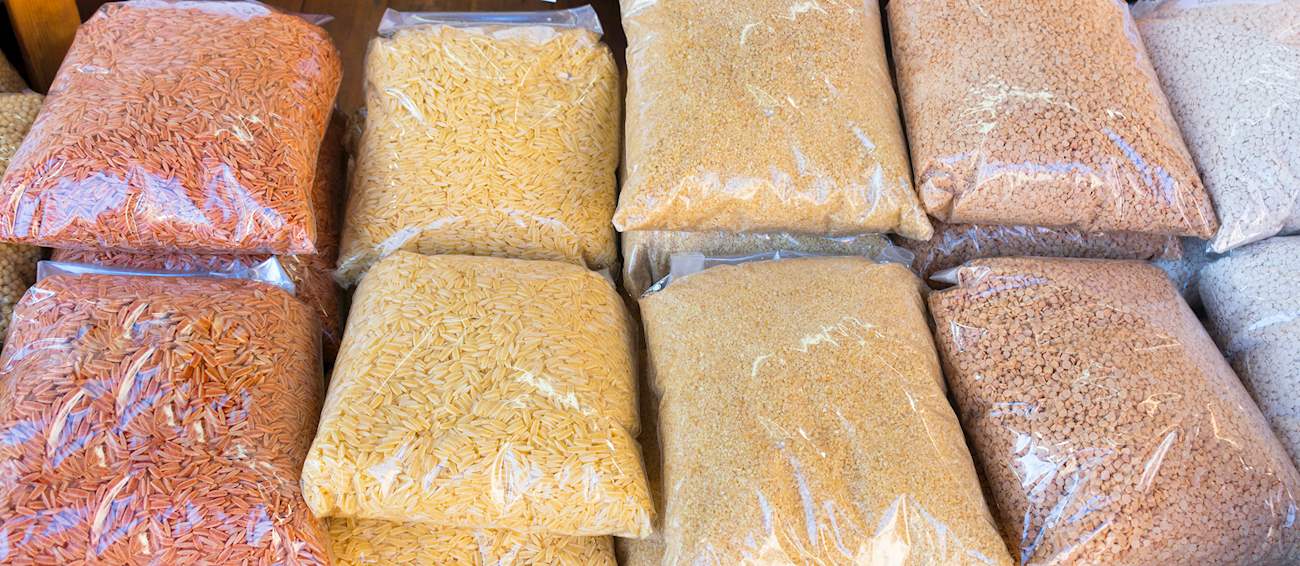Trahana
(Tarkhineh, Tarkhāneh, Tarkhwāneh, Tarkhana, Tarxane, Tarana, թարխանա, Τραχανάς,ترخینه، ,ترخانه، ,ترخوانه , Tрахана, Tархана)
Trahana is a traditional pasta-like product consisting of small coarse granules that are made by combining wheat and dairy products such as milk, sour milk, buttermilk, or yogurt. This product is believed to have ancient origins, and the age-old tradition of its preparation is thought to have initially been a means of preserving milk in pre-refrigeration times.
It is typically prepared with wheat flour, semolina flour, cracked wheat, or bulgur (especially on Crete), while some versions may also call for the addition of eggs. Traditionally, the mixture is dried in the sun before it’s broken up into uneven-shaped pieces, or it can be first boiled to a porridge-like consistency and then sun-dried.
There are several different varieties of trahana depending on the dairy product used for its preparation, namely sour trahana, which is made with sour milk, yogurt, or buttermilk and flour, sour trahana with eggs, and sweet trahana, which consists of sheep’s or goat’s milk (or a mixture of both kinds) and flour. Read more
In Greece, there’s also another variety of trahana called nistisimos trahana (meaning fasting or dairy-free trahana), which calls for combining the flour with vegetable pulp instead of milk products. Apart from Greece, numerous versions of trahana known by similar names are prepared and consumed throughout the Eastern Mediterranean, Southeastern Europe, and the Middle East.
This dry granular pasta has found a wide range of uses in the traditional cuisines of the countries where it’s still consumed. In Greece, trahana is typically cooked in water or stock and enjoyed with feta cheese, yogurt, and sautéed onions, added to various soups and stews, or used as a filling for pies, vegetables (gemista), or dolmas.

